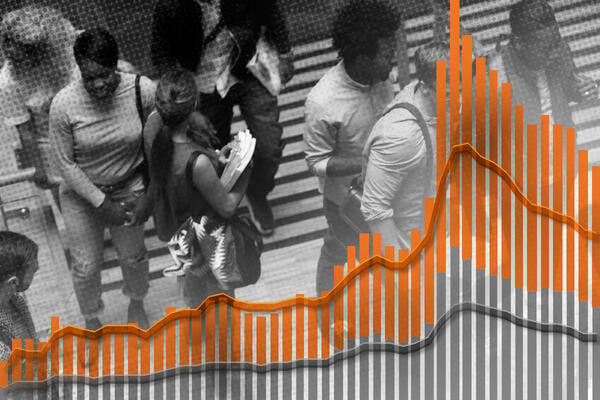
Drop in Pell Funds Hurts Black Students, Southern Colleges
Federal funding for Pell Grants, and the number of awards given, plummeted between fiscal years 2011–12 and 2021–22. Black student enrollment in public colleges and universities plunged by nearly a half million students over that same period. A new report, produced by the University of Alabama’s Education Policy Center for the Southern Education Foundation, suggests the declines in financial aid and Black students attending college are linked.
The report, released Tuesday, traced trends in Pell Grant funding over decades and showed how these fluctuations dealt a disproportionate blow to the South’s rural and majority-Black public higher education institutions and their students. Researchers drew on data from the Integrated Postsecondary Education Data System and 47 Pell Grant end-of-year reports from the U.S. Department of Education.
The analysis found that Pell funding more than doubled between 2007–08 and 2011–12, from $14.7 billion to $33.6 billion; the number of awards grew from 5.5 million to 9.4 million. At the same time, enrollments and Pell recipients hit record highs at community colleges, regional and flagship universities, and historically Black college and universities. Researchers partly credited the 2009 American Recovery and Reinvestment Act, which required states to level-fund higher ed during the Great Recession, staving off skyrocketing tuition and allowing Pell Grants to go farther.
But when the ARRA funds stopped flowing, Congress didn’t approve more discretionary funding to support the expanded program, and in 2012, it created more restrictive eligibility requirements for Pell. States also cut appropriations to higher ed during that time. Federal funding for Pell Grants dropped to $25.8 billion between 2011–12 and 2021–22, and the number of awards fell by more than a third to 6.2 million, according to the report.
F. King Alexander, a professor of educational leadership and policy at Florida Gulf Coast University and co-author of the report, said millions fewer students received Pell Grants in recent years compared to a decade ago, but “nobody’s talking about this.”
The country has been “putting the emergency brake on social mobility,” he said.
Making matters worse, researchers found, the maximum Pell Grant hasn’t kept up with college costs—let alone the average Pell award. (The report found at least 70 percent of Pell recipients don’t get the maximum amount.) For example, the average Pell Grant in fiscal year 2021–22 was $4,685, compared to the maximum amount of $6,495. Neither would cover the full cost of tuition and fees for the average full-time community college student in Alabama, the report noted.
The maximum Pell Grant has also fluctuated over the years; Congress increased the amount 32 times, flat-funded it 13 times and cut it three times between 1974–75 and 2021–22. (This year, Senate Republicans averted a cut to the maximum grant award proposed by the Trump administration.)
But the inconsistency of federal Pell funding hasn’t been felt equally across the country. The report argued that these dynamics likely contributed to steep Black student enrollment declines in the South and nationwide. And losses of Pell funding and enrollment drops hit the South’s most underresourced institutions—including rural community colleges and majority-Black colleges—especially hard.
A Blow to Black Students
While researchers stopped short of drawing a causal connection between declines in Black student enrollment and federal Pell spending, the report emphasized that the number of Black students fell by 487,109 over the same period, between 2011–12 and 2021–22.
Just over half (58 percent) of that Black enrollment decline happened in Southern states, whose institutions of higher ed educate more than half of the country’s Black students. According to the report, 218 of the nation’s 279 majority-Black institutions are in the South.
Over all, higher ed institutions in Southern states enrolled 23 percent fewer Pell recipients in 2021–22 compared to a decade earlier. Almost 25 percent less Pell funding flowed to colleges and universities in the South, and enrollment across institutions fell by 521,241 students between 2011–12 and 2021–22. Total college enrollment fell in 14 out of 17 Southern states, and Black student enrollment fell in 16 states. Meanwhile, both the number of Pell Grant recipients and the percentage of students receiving Pell Grants fell in 16 states, while Pell funding levels over all fell in 12 Southern states.
As Black students and low-income students overall receive less Pell aid, they’ll “either not enroll altogether or they won’t finish because they don’t have the funds to actually get through the whole program,” said co-author Noel Keeney, a graduate research assistant and director of data analytics at the University of Alabama’s Education Policy Center.
Southern Colleges Suffer
That dynamic can come at a cost for some of the most underresourced Southern institutions, the report suggested.
The South’s public rural, suburban and urban community colleges enrolled 19 percent fewer students over all in 2021–22 compared to a decade earlier. Black student enrollment dropped nearly 30 percent at public rural, suburban and urban community colleges. At community colleges with Black majorities, including many in rural areas, enrollment fell a whopping 55 percent. (Nearly 15 percent of Black Southerners live in rural communities.)
At the same time, these institutions experienced significant losses in Pell funding. Southern rural, suburban and urban community colleges suffered cuts to at least a third of their Pell funds between 2011–12 and 2021–22. The number of Pell recipients dropped at every type of community college and public regional university in the South over that decade.
Researchers argued institutions in Southern states are disproportionately hurt by shifts in Pell money because these states tend to offer little in the way of need-based student aid, leaning more heavily into merit-based scholarships. As a result, students and colleges can’t rely on state aid as a buffer when Pell funds dip.
Jim Purcell, executive director of the Alabama Commission on Higher Education, agreed limited need-based aid at the state level makes the South more vulnerable to Pell’s ups and downs. He said Southern states have historically had agrarian economies that didn’t require as many workers to earn postsecondary credentials.
But “that has all changed in the last 40 years as we’ve all transitioned to a service economy and technology,” he said. “We have to have a skilled workforce. So, aid is important.”
When federal Pell funds fluctuate, it’s hard for underresourced Southern institutions to make long-term plans, said Keeney, because they never know “if the rug’s going to get pulled out” from under them one year “or they’re going to get a bag of funding the next.”
For example, after Congress imposed new Pell eligibility requirements in 2012, Albany State University, a Georgia HBCU, had fewer Pell recipients for five consecutive years and lost more than 1,000 students, according to Arthur N. Dunning, the university’s president from 2013 to 2018.
“We’re not a large institution,” Dunning said in the report. “We had to bear a $2.5 million reduction in tuition and fee income.” Increases in the maximum Pell Grant couldn’t “prevent reductions in teaching faculty and staff layoffs for student support services at ASU.”
The report offered recommendations to federal lawmakers to stabilize Pell funding, including making the funds fully mandatory, not reliant on discretionary funding, and bringing Pell funding back up to 2011–12 levels, adjusted for inflation, among other suggestions. It also recommended state lawmakers shore up need-based aid programs to make up for gaps between Pell and student costs.
Stephen G. Katsinas, director of the Education Policy Center, said it’s important for legislators to better understand how shifts in federal Pell funding affect students and institutions, in tandem with state policies, because the stakes are high.
“Pell Grants are the root of a middle-class America and a middle-class Black America,” Katsinas said. “America’s HBCUs and the public institutions in the South stimulate academic and intellectual development. They need and deserve support.”
Source link


